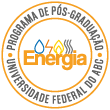Banca de QUALIFICAÇÃO: MARJHORRE LAYLAKAR LEYVOSIYER ZINATTO MALFATTI
Uma banca de QUALIFICAÇÃO de MESTRADO foi cadastrada pelo programa.DISCENTE : MARJHORRE LAYLAKAR LEYVOSIYER ZINATTO MALFATTI
DATA : 17/12/2019
HORA: 15:00
LOCAL: sala 306, 3º andar, Bloco B, Campus SA da Fundação Universidade Federal do ABC, localizada na Avenida dos Estados, 5001, Santa Terezinha, Santo André, SP
TÍTULO:
POTENTIAL MARKET OF ANACYLE REACTIVE POWER SERVICES PROVIDED BY SUGAR AND ALCOHOL MILLS
PÁGINAS: 56
GRANDE ÁREA: Outra
ÁREA: Planejamento Energético
RESUMO:
The installation of sugar and ethanol plants has grown in recent years in Brazil because of incentives to new renewable sources that favor the supply of electric demand. These plants have several synchronous generators. In an adequate scenario of compensation for the injection reactive power for these generators, the injected reactive power can increase the reliability and safety of the electric system, improving the voltage profile of the bus near the sugar and alcohol plants. In order to assist in the analysis of the potential market for ancillary reactive power services, this paper presents a methodology that minimizes the amount paid by the electric power of the sugar and ethanol plants by adjusting the power factor of their generators and defining a compensation rate for the injected reactive power. This methodology uses two modules. The first is a spatial model to determine the plants closest to the substations that may need a greater amount of reactive power. The second is a particle swarm algorithm that finds the minimum value of the energy invoice payment for the plants found in the first stage. The methodology is applied in the São Paulo state, in order to find the compensation values for the plants of the regulated contracting environment that are closest to the 138 kV substations. The result of the methodology is a map showing the plants that may have a greater contribution to improving the quality of the electric power supply and that will have a minimization in their energy bill. This class of results can help in the definition of a differentiated structure of remuneration per bus for the reactive power injection and in the analysis of the potential market of reactive power ancillary services provided by the sugar and alcohol plants.
MEMBROS DA BANCA:
Presidente - Interno ao Programa - 2286312 - JOEL DAVID MELO TRUJILLO
Membro Titular - Examinador(a) Interno ao Programa - 1544340 - PATRICIA TEIXEIRA LEITE ASANO
Membro Titular - Examinador(a) Externo ao Programa - 3066952 - EDUARDO WERLEY SILVA DOS ANGELOS
Membro Suplente - Examinador(a) Interno ao Programa - 1876380 - THALES SOUSA
Membro Suplente - Examinador(a) Externo ao Programa - 2200473 - JOSE ALBERTO TORRICO ALTUNA




